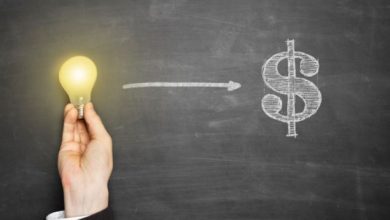Capital, income, and the time-value of money

Our ideas define how we act and how we interpret and analyze the world.
Action is defined by its purpose. The thought of how to go from here to our end (the purpose) is defined by our ideas. The nature of our thoughts greatly influences the acts we take and the outcomes that result. Moreover, the ability to think in a particular way may be crucial to the achievement of particular results. The ability to conceptualize in particular ways depends not only on our intelligence and our level of education. It depends also, crucially, on the institutional environment in which we think and act.
This is probably most clear in the case of thinking in order to calculate, that is, calculating in terms of some metric or set of metrics, calculating what the outcome of particular actions will or might be. Calculating implies the ability to quantify and compare in order to mentally (subjectively) weigh the alternative actions that one is able to take. Since possible outcomes from our course of action lie in the future, they are expected outcomes. Such expectations can vary across individuals. The expected outcomes that each individual foresees will be weighed and compared according to the individual’s subjective preferences. This mental ability to perform these calculations, facilitated also by the legal and social environment in which we exist, is of monumental significance, and this is no more true than in the area of capital and finance, which is the subject of this book.
The ability to calculate capital-values is essential to the making of financial investment decisions, without which no modern economy could exist. Capital value is the result of expectation and calculation, which is contingent on the ideas we have of what capital is and is not. We will see that the question of what capital is, is more important, and more elusive than is usually assumed in most formal treatments of the subject. In addition, the problem of properly defining capital has significant implications in economic theory.
This definition uses familiar concepts of accounting and finance such as double-entry bookkeeping and, implicitly, the difference between stocks, and flows. Recorded transactions can be traced to their effects on accumulated values of the resources owned by the business firm (assets) and the sums owed by the firms that are payable in the future (liabilities). These accumulated values are stocks. The difference between the value of the assets and liabilities
is the equity, sometimes referred to as capital, and what Mises is referring to in the quote above. The equity is measuring the value that belongs to the owners of the firm. However, and this is where Mises’s approach may need some further explication, capital should be understood as a reference to the use of any means of production rather than to its ownership. The ownership of said means of production does not define the nature of their use. If the owner of a firm owns a tool and decides to sell it and then rent it back, such tool does not cease to be capital because there is a change in ownership. The expectation of the ability to continue using that tool in the earning of revenue will figure into the producer/entrepreneur’s calculation of the profitability of the firm. The tool remains an asset used by the firm regardless of who the owner is or how the opportunity cost is recorded for accounting reasons. It is, rather, more accurate to think of capital as the value of all production goods in the control of a firm, rather than as the value of only those that it owns outright.
Equity as commonly used is most often confined to those productive assets legally owned by the firm.




